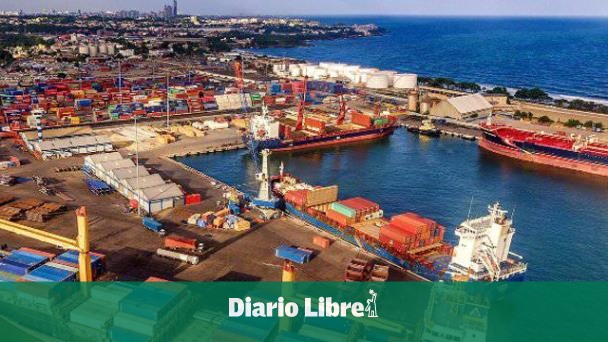The uncertainty of guerra of Ukraine and the increase of restrictions in China to guarantee its zero covid policy, have increased the pressures in the supply chains, which makes the cost of the maritime transport remain at historically high levels.
The Baltic Dry Index, an indicator that measures the evolution of the cost of maritime transport of merchandise and is made from a basket with the freight rates of various categories of merchandise ships, closed the week at 2,342 points.
This is 58.4 percent less than the highs it reached last October, but it is still very high. With the exception of a specific rise that occurred in September 2019, it is its highest level since 2010.
The average of the ten years prior to the pandemic for this indicator is 1,240 points, according to data available on Bloomberg.
Pressures on global supply chains arose after the revival of activity with the relaxation of the restrictions adopted to face the pandemic and skyrocketed the costs of the maritime transport which, as XTB analyst Joaquín Robles recalls, “is decisive for the future of the economic cycle”, since 80% of world trade is carried out by sea.
The soaring demand has put enormous pressure on supply chains, leading to problems at ports related to the carrying capacity of ships, the lack of containers to transport the goods, and labor shortages.
In the worst of the post-pandemic bottlenecks, in October last year, the Drewry World Composite Container Index (an indicator is made up of container freight rates on eight trade routes linking Asia with Europe and USA) marked its historical maximum at 10,377 dollars per container.
Since then, its price has moderated, but it has ended the week at 7,578.6 dollars, the same price that it registered in June of last year, in full rise with the commercial opening after the pandemic. The cost of the container for the ten years prior to the arrival of the coronavirus was 1,626 dollars.
The chief economist for Asia-Pacific investment bank Natixis, Alicia Garcia, argues that the lifting of lockdowns in China in recent weeks “should improve bottlenecks in key commercial ports such as Shanghai.”
However, he warns that there is still a “crucial problem”, since the border remains closed with quarantines of at least ten days, “which increases the cost of air and sea transport, including the freight train link between China and Europe”.
Manufacturers in Europe and the US are dependent on supplies from China and other East Asian economies so, as Robles points out, “recent lockdowns, price hikes, disruptions and shipping delays in containers hamper production”.
These variables could cut industrial production in the eurozone and the US by between 3% and 5% and “close to the contraction zone,” he adds.
GUERRA IN UKRAINE
In a report this month, investment bank Citi notes that the guerra in Ukraine it has added new pressures that will cause a greater persistence of tensions, especially if it continues over time.
Russia is one of the main exporters of oil, coal, iron and steel, goods that are sold on global markets, so interruptions in its exports will translate into higher prices.
Last March, Brent crude touched 140 dollars per barrel, a price not seen since the record highs of 2008, and natural gas broke all records by reaching 335 euros per MWh.
Additionally, Russia and Ukraine are key exporters in a host of raw materials, such as wheat, processed nickel and fertilizers, timber, steel, titanium, aluminum, coal and gas, merchandise now stuck in Black Sea ports.
THE NEXT FEW MONTHS
“The global economy continues to be threatened by the high prices of raw materials and by problems in the supply chains,” says Robles, who also indicates that the maritime transport continues to be unable to cover all the demand, despite the fact that it has moderated with the increase in inflation.
This expert sees a possible slowdown in transport costs as an effect of the lower demand that would cause the decline in world economic growth after the rise in interest rates by central banks.
However, he points out that freight prices will remain high until port restrictions and terminal inefficiencies are resolved, for which he considers that in order to return to normal without falling demand “it will be necessary to invest in new infrastructure solutions , charging technology and digitization”.


